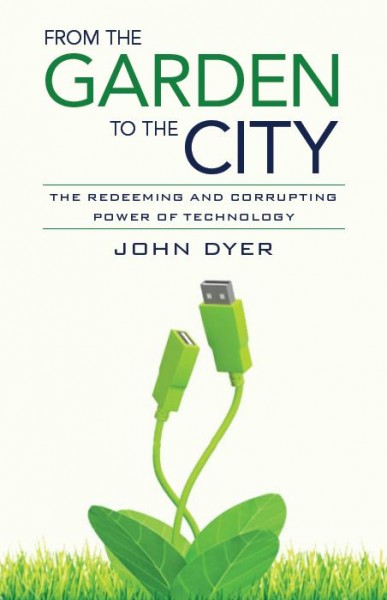A Bow Instead of a Handshake | John Dyer
 I'm chillin' on a blog tour promoting From the Garden to the City: The Redeeming and Corrupting Power of Technology by John Dyer. A post from me every week, plus more at host site: ChurchM.ag. Check it out..
I'm chillin' on a blog tour promoting From the Garden to the City: The Redeeming and Corrupting Power of Technology by John Dyer. A post from me every week, plus more at host site: ChurchM.ag. Check it out..
Chapter 8: Mediums
Yeah, we know the plural of "medium" is "media." But since the common usage still evokes Wolf Blizter anchoring a CNN marathon about a slow-speed car chase, John Dyer switchs it up, and has us talk about "mediums--those packages of communication that change the way we perceive and understand the messages.
In this chapter, Dyer hits three topics that anyone who has followed me for any amount of time is pretty familiar with:
- Cultural ritual, effort, and pace of mediums help define them
- Digital immigrant vs. digital native
- Printing press and photography as game-changers
One great illustration I'll plan to steal (thanks John!) helps us picture the digital native/immigrant divide:
Imagine for example that Americans suddenly decided to replace shaking hands with bowing as the way to greet one another. For most adults, bowing would feel strange, different, and unnatural. It might take years for bowing to take hold and feel familiar, and even then some people just wouldn't like the change. However if we taught our kids to bow from birth, it would never feel unnnatural to them. The wouldn't have experienced "handshake culture," so they would only encounter handshaking in history books or quaint small towns. The result would be two groups of people: those raised with handshakes for whom bowing feels strange, and those raised with bowing for home bowing is completely natural.
301 Critique (more for the nerds): Not much to pick at here: Dyer does a great job on this. When he speaks about the printing press encouraging uniformity, accuracy, and complex linear thought (he doesn't note much earlier Chinese block printing, but that's okay) , he could have extended the uniformity into how exact copies removes sacred objects establishes sacred thoughts as things that matc--something that has dramatically altered our view of orthodoxy. Linerarity can be extended to speak about the idea of a "start, middle, and end," something that reinforced the "destination over the journey" in modern soteriology. But these are simply extensions with more space.
And huge kudos to Dyer speaking about versification as a "layer of technology" over Scripture. Yes! He doesn't cite anyone here, and this is understandable, because I've seen very little written on this. Christians need to understand that this does not neutrally impact our use and understanding of Scripture.
